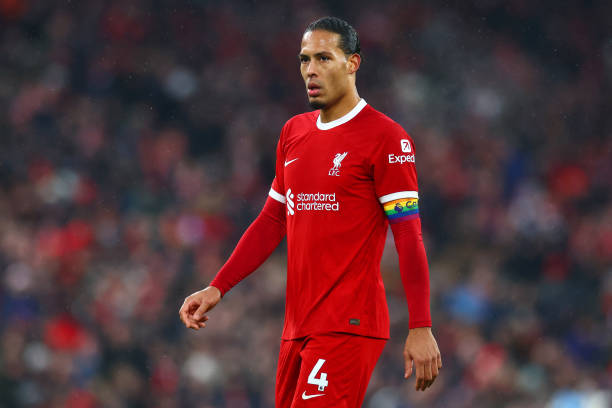As Liverpool captain Virgil van Dijk prepares to lift his second Premier League title, his journey from a modest upbringing in the Dutch city of Tilburg to becoming one of the most commanding defenders in world football is a testament to resilience, inner drive, and quiet determination.
Last month, van Dijk returned to his roots with a low-profile visit to his childhood club, Willem II. The purpose? To revive a youth tournament now renamed the Virgil Legacy Trophy. It’s more than a gesture of nostalgia—it’s his way of investing in the next generation.
“It’s my way of giving back,” van Dijk said. “This tournament gives rising stars the platform they need to take the next step towards their dreams.”
The next edition of the tournament, scheduled for September, will feature not just Willem II and Groningen, but also some of Europe’s elite clubs including Arsenal, Manchester City, PSG—and, of course, Liverpool.
But van Dijk’s story could have gone very differently.
A Calm Presence Misunderstood
Van Dijk joined the Willem II academy in 2001 at the age of 10. Despite his natural strength and calm presence on the pitch, he didn’t always win over his youth coaches.
Jan van Loon, then academy director, recalls the dilemma many faced. “He was physically dominant, could time tackles to perfection, and was never flustered. But he could come across as laconic—too relaxed,” van Loon explains. “Some youth coaches even considered him lazy.”
This perception wasn’t entirely fair. Van Dijk’s life outside football was complicated. With divorced parents, he often had to care for his younger siblings—picking them up from school, making meals, and then catching a bus to training. It wasn’t uncommon for him to arrive late.
“There was one time he missed the bus because his younger brother wanted peanut butter, and he had to run to the supermarket,” van Loon chuckles. “But when I asked him about it, he always gave a full explanation. That sense of responsibility shaped him.”
A Village Behind the Man
One turning point came during a crucial opportunity to play for the second team while still with the under-19s. The catch? Van Dijk had to submit a school report the same day.
“He hadn’t finished it,” van Loon recalls, “and education came first at the club. But I told him, ‘Let’s find a solution together.’ His classmates helped him, not because he was a footballer, but because he was well-liked. That teacher also played a part.”
Van Loon believes this speaks to a larger truth. “It takes a village to raise a child,” he says. “Virgil had people around him who cared—and he had the instincts to seek out those who could help him grow.”
That included extra work with an exercise physiologist who tailored training to his centre-back role. “While others stopped, Virgil wanted to keep going,” says van Loon. “That was the inner drive—misread as laziness.”
Turning a Corner
Despite his steady development, Willem II hesitated to offer him a professional contract. Van Dijk sensed the doubt and accepted a move to FC Groningen in 2010, who showed greater faith.
His debut came in May 2011, but just as he was gaining momentum, he was sidelined by a near-fatal health scare—appendicitis, peritonitis, and a kidney infection. The illness was so severe that he signed a kind of testament in case he didn’t survive.
“My body was broken,” van Dijk later said. “For the first time, football didn’t matter. My life was at risk.”
He recovered and impressed again, but the Dutch elite clubs still didn’t come knocking. That’s when Celtic swooped in, signing him for £2.5m in 2013. His manager there, Neil Lennon, saw something special from day one.
“I told him, ‘Enjoy it here, because you won’t be here long.’ He was the best I’ve worked with. He had everything—pace, composure, physicality.”
Two successful seasons in Scotland led to a move to Southampton, and eventually, in 2018, a then-world record £75m transfer to Liverpool. Since then, van Dijk has helped transform the club into serial contenders, lifting the Champions League, Premier League, FA Cup, League Cups, Club World Cup, and winning the 2019 UEFA Men’s Player of the Year award.
Captain, Leader, Inspiration
Now 33, van Dijk wears the Liverpool armband with pride and purpose. As the Reds inch closer to another title, his leadership on and off the pitch has earned him immense respect.
“He’s adapted to every challenge,” says van Loon. “He deals with the media and the staff with maturity. No one handed him success—he had to earn everything.”
Van Dijk’s story is one that should inspire any young athlete: a misunderstood talent who quietly shouldered responsibility, defied expectations, and carved out greatness through persistence and character.
For all the medals and accolades, perhaps his biggest achievement is proving that quiet strength, when guided well, can speak the loudest.



